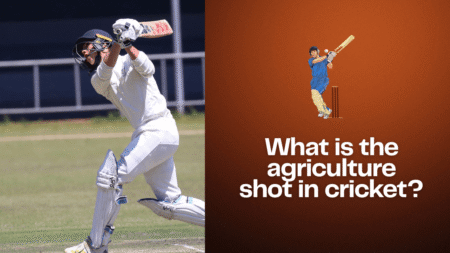

Denis Amiss had an idea. He donned a look different from his peers in the World Series Cricket of the 1970s. Apart from the pads and gloves, he had another accessory on. It was a helmet, much like the ones used by people wearing motorized vehicles. Amiss’ customized helmet saw a grill-like framework attached to the helmet. This was the first ever blueprint on the modern cricket helmet. This helmet had a major disadvantage. It covered the ears to the extent that the batters could not listen to their partners at the other end of the pitch. This led to many modifications of the helmet in terms of materialistic development.
Cricket helmets before the one wore by Amiss were not bulky. Initially batters only wore a simple cap. In the 1930s, Patsy Hendren, another English batter wore the first customized helmet which was made by his wife. It was a hat that had multiple layers of rubber padding. However, that design was lost in time. Skull cap helmets protecting the ears were popularized in the 1980s. During this time, pace bowlers refrained as much as possible from bowling short-pitched balls.
There had been a few incidents before and after the seventies that kept the batters on their toes when it came to face fast bowlers. George Summers Abdul Aziz, Ian Folley, Raman Lamba were a few players who died due to a blow on their heads by a cricket ball. This led to manufacturers constantly improvising the helmet such that it was not bulky and could withstand the pace of the bowlers. Gradually, the bowlers too began to bowl at speeds spiking up to 140 to 150 km/hr. This led to the modern design of the cricket helmet.
The current cricket helmet is worn by wicket-keepers as well when a spinner or slow bowler comes to play. In fact, helmet development further popularized all the “silly” fielding positions where the fielders stand too close to the pitch (silly point, silly mid-on, etc.). The cricket helmets contain a foam like fluid which act as a shock absorber. It lies between the outer shell of the helmet made of durable plastic and an inner padding surface. The grill attached to the body of the helmet is made of steel or carbon fiber or titanium.
In 2014, Australian cricketer Phillip Hughes bowled a bouncer which struck a critical area of the skull behind the ears in the region of the interface between the neck and the head. This led to severe hemorrhage resulting in his unfortunate demise. This created a massive uproar in the helmet designing. Thus, helmets are now extended behind the ears and covered with a reinforcement technology that along with the help of a few ventilation holes can resist the pace of the ball.
Helmets play an important role in both the batting and bowling scorecards. These are the scenarios which might come into play including the helmet:
Let’s say the ball strikes the helmet of a fielder wearing it. The ball then flies to another fielder without bouncing. The fielder catches it. Is the batsman out? The answer is no. According to the laws, a batter is not out if the ball has touched the helmet of a fielder wearing it.
What if the ball lodges in between the helmet of a fielder? In such a situation, the ball is considered a dead ball, which means the bowler has to again bowl that ball.
What if the ball touches the helmet of the fielding side that is not in use and placed on the ground? This helmet is usually placed behind the wicket-keeper. If the batters quickly change ends before the ball touches the helmet, which it eventually does, the team will get 6 runs in total. 5 runs as penalty for the ball touching the helmet and one run for the batters changing ends. Irrespective of whether the batters change ends or not, 5 penalty runs are mandatory if the ball hits the helmet.
What if the ball hits the batter’s helmet and goes on to the boundary? Be it a four or a six, runs scored off a batter’s body parts apart from the bat and gloves are added as leg byes. Hence, the umpire would give it as 4 leg byes or 6 leg byes depending on how the ball crossed the boundary after hitting the helmet.
What if the helmet of the batter goes on to the hit the striker’s stumps? As unusual it seems, but this has occurred noticeable times in cricket. As a reflex action to a bowler’s delivery, batters have often seen the helmet get off their head and hit the stumps. The batter is declared out by means of hit wicket in this case. This is why chinstraps are present to fasten the helmets tightly around the batter’s head.
Helmets are now a necessity in world cricket. It is important for the batters or the fielders standing near the pitch to wear the helmet in order to protect themselves from the hard circular sphere of cork and leather.








